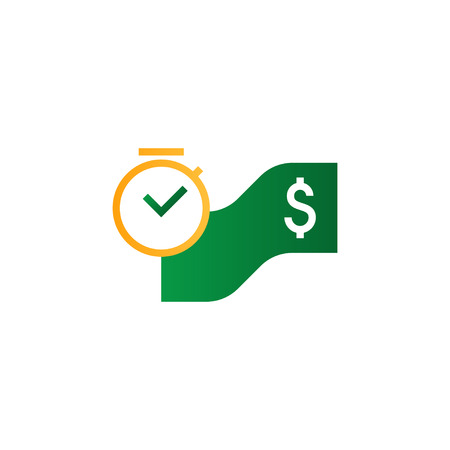1. Understanding the Importance of an Emergency Fund
Life is full of surprises, and not all of them are pleasant. A sudden medical bill, car repair, or job loss can throw your finances into chaos if youre not prepared. This is where an emergency fund comes in. Having a dedicated savings account for unexpected expenses can provide financial stability and peace of mind.
Why You Need an Emergency Fund
An emergency fund acts as a financial cushion, helping you avoid debt when unexpected costs arise. Without one, you might have to rely on credit cards or loans, which can lead to high-interest payments and long-term financial stress.
(1) Protection from Unexpected Expenses
Emergencies happen when we least expect them. Whether its a medical emergency, home repair, or sudden job loss, having savings set aside ensures you dont have to scramble for money when you need it most.
(2) Avoiding Debt
Without an emergency fund, many people turn to credit cards or personal loans to cover unexpected expenses. This can lead to high-interest debt that takes years to pay off. A well-funded emergency account helps you stay financially independent.
(3) Reducing Stress and Anxiety
Financial uncertainty can be stressful. Knowing you have funds available for emergencies gives you peace of mind and allows you to focus on other aspects of your life without constant worry about money.
How Much Should You Save?
The ideal size of your emergency fund depends on your personal situation. Here’s a general guideline:
| Situation | Recommended Savings |
|---|---|
| Single with stable income | 3 months of living expenses |
| Married with dual income | 3-6 months of living expenses |
| Single or married with irregular income | 6-12 months of living expenses |
| Family with dependents | 6-12 months of living expenses |
(1) Start Small and Build Over Time
If saving several months worth of expenses seems overwhelming, start with a small goal—like $500 or $1,000—and gradually build up from there.
(2) Keep It Accessible but Separate
Your emergency fund should be easy to access in case of need but separate from your regular checking account to avoid temptation.
(3) Use a High-Yield Savings Account
A high-yield savings account allows your money to grow while remaining accessible when needed.
Understanding the importance of an emergency fund is the first step in achieving financial security. In the next section, well explore practical ways to start building your fund from scratch.
2. Setting a Realistic Savings Goal
Before you start saving for your emergency fund, its important to determine how much you actually need. Your goal should be realistic and based on your income, monthly expenses, and overall financial situation.
How Much Should You Save?
A common recommendation is to save at least three to six months worth of essential living expenses. However, the right amount depends on your personal circumstances. Here’s a simple way to calculate your target:
| Category | Estimated Monthly Cost ($) | 3-Month Savings Goal ($) | 6-Month Savings Goal ($) |
|---|---|---|---|
| Housing (Rent/Mortgage, Utilities) | [Your Cost] | [Your Cost * 3] | [Your Cost * 6] |
| Food & Groceries | [Your Cost] | [Your Cost * 3] | [Your Cost * 6] |
| Transportation (Gas, Public Transit) | [Your Cost] | [Your Cost * 3] | [Your Cost * 6] |
| Healthcare (Insurance, Medications) | [Your Cost] | [Your Cost * 3] | [Your Cost * 6] |
| Total | [Sum of Monthly Costs] | [Total * 3] | [Total * 6] |
Main Factors to Consider
(1) Job Stability
If you have a stable job with consistent income, a three-month emergency fund may be enough. However, if your job is unpredictable or youre self-employed, aim for six months or more.
(2) Household Size
A single person might need less savings compared to a family with children. Consider the number of dependents and their financial needs when setting your goal.
(3) Existing Debt
If you have high-interest debt, balancing savings with debt repayment is crucial. Start with a small emergency fund while focusing on reducing debt.
(4) Health and Insurance Coverage
If you have good health insurance and minimal medical expenses, you may not need as large of an emergency fund. On the other hand, if you have ongoing medical conditions, consider saving more.
The Importance of Setting a Realistic Goal
Your emergency fund should be achievable based on your current financial situation. Start small if necessary—saving even $500 can help cover unexpected expenses like car repairs or medical bills. The key is to begin now and build over time.
![]()
3. Finding Money to Save
Building an emergency fund from zero might seem challenging, but with the right approach, you can find ways to save without drastically changing your lifestyle. By cutting unnecessary expenses, increasing your income, and properly allocating your funds, you can steadily grow your savings.
Cutting Expenses
One of the quickest ways to free up money for your emergency fund is by reducing non-essential spending. Here are some practical steps to trim expenses:
(1) Review Your Monthly Subscriptions
Many people pay for services they rarely use. Take a close look at subscriptions like streaming platforms, gym memberships, or premium apps and cancel any that aren’t essential.
(2) Reduce Dining Out
Eating out frequently can add up quickly. Consider cooking more meals at home and packing lunches for work to save hundreds of dollars per month.
(3) Lower Utility Bills
Simple changes like turning off unused lights, using energy-efficient appliances, and adjusting your thermostat can help lower electricity and gas bills.
Example: Monthly Savings from Cutting Expenses
| Expense Category | Potential Monthly Savings |
|---|---|
| Canceled Subscriptions | $20 – $50 |
| Dining Out Less | $100 – $300 |
| Reducing Utility Usage | $30 – $80 |
| Total Potential Savings | $150 – $430 |
Increasing Your Income
If cutting expenses isn’t enough, finding additional sources of income can accelerate your savings progress.
(1) Take on a Side Gig
You can earn extra cash through freelancing, rideshare driving, pet sitting, or online tutoring. Even a few hours per week can make a difference.
(2) Sell Unused Items
If you have clothes, electronics, or furniture you no longer need, consider selling them through platforms like eBay, Facebook Marketplace, or Craigslist.
(3) Ask for a Raise or Work Overtime
If feasible, negotiating a raise or taking on extra shifts at work can provide additional funds for your emergency savings.
Allocating Funds Efficiently
The final step is ensuring that saved and earned money actually goes into your emergency fund instead of being spent elsewhere.
(1) Automate Your Savings
Set up an automatic transfer from your checking account to your emergency fund each payday to ensure consistent contributions.
(2) Use Cash Windfalls Wisely
If you receive tax refunds, bonuses, or gift money, consider putting a portion—if not all—into your emergency fund.
4. Choosing the Right Place to Store Your Emergency Fund
Once you start building your emergency fund, choosing the right place to store it is crucial. You need a safe, accessible, and reliable account that allows you to access your funds quickly in case of an emergency while also earning some interest.
Why Accessibility and Safety Matter
Your emergency fund should be easy to access when needed but not so easily available that youre tempted to spend it on non-emergencies. The ideal account should strike a balance between liquidity and security.
Best Options for Storing Your Emergency Fund
Here are some of the best places to store your emergency savings:
| Storage Option | Pros | Cons |
|---|---|---|
| High-Yield Savings Account (HYSA) | Earns interest, FDIC insured, easy access | Interest rates may fluctuate, limited withdrawals per month |
| Money Market Account (MMA) | Higher interest rates than regular savings, check-writing options | May require a higher minimum balance |
| Certificate of Deposit (CD) | Fixed interest rate, FDIC insured | Penalties for early withdrawal, less liquidity |
| Traditional Savings Account | Easily accessible at your bank, low risk | Low interest rates compared to HYSA or MMA |
| Cash at Home (Small Amount) | Immediate access in emergencies like power outages | No interest earned, risk of theft or loss |
How to Choose the Best Option for You
(1) Consider Liquidity Needs
If you want quick access to your money without penalties, a high-yield savings account is a great option. CDs might offer better rates but have withdrawal restrictions.
(2) Compare Interest Rates and Fees
Different banks offer different interest rates and may charge maintenance fees. Look for accounts with competitive rates and minimal fees.
(3) Ensure FDIC or NCUA Insurance
Your emergency fund should be protected. Ensure that the account is insured by the FDIC (for banks) or NCUA (for credit unions) up to $250,000.
(4) Avoid Risky Investments for Emergency Funds
Avoid putting your emergency fund into stocks, bonds, or cryptocurrency. These assets can fluctuate in value, making them unreliable for emergencies.
Selecting the right storage option ensures that your emergency fund remains safe and ready when you need it most.
5. Building the Habit of Consistent Saving
Starting an emergency fund is just the first step—the real challenge is maintaining and growing it over time. By developing a habit of consistent saving, you can ensure that your emergency fund continues to grow and provides financial security when you need it most. Here’s how to stay on track:
Automate Your Savings
One of the easiest ways to build consistency is by setting up automated transfers to your emergency fund. Automation removes the temptation to spend extra cash and ensures that saving becomes a regular habit.
(1) Set Up Automatic Transfers
Schedule a recurring transfer from your checking account to your savings account each payday. Even small amounts add up over time.
(2) Use Savings Apps
Apps like Digit, Qapital, or Chime can automatically set aside small amounts based on your spending habits.
(3) Direct Deposit into Savings
If your employer allows it, designate a portion of your paycheck to go directly into your emergency fund.
Stay Motivated with Clear Goals
Saving for an emergency fund can feel overwhelming at times, but setting clear goals will help you stay focused and motivated.
(1) Define Your Target Amount
Set a realistic goal for your emergency fund—whether it’s $500, one month’s expenses, or six months’ worth.
(2) Track Your Progress
Use a simple chart or budgeting app to see how much you’ve saved and how close you are to reaching your goal.
(3) Celebrate Small Milestones
When you hit a savings milestone (like $100 or $500), reward yourself in a budget-friendly way to stay encouraged.
Make Regular Contributions a Priority
Treating savings as a non-negotiable expense will help you build a strong financial foundation.
| Savings Strategy | Description |
|---|---|
| “Pay Yourself First” | Treat savings as a fixed expense, just like rent or utilities. |
| Round-Up Savings | Use banking features that round up purchases and deposit the difference into savings. |
| No-Spend Challenges | Commit to no-spend days or weeks and transfer the saved amount into your emergency fund. |
Avoid Common Pitfalls
Even with good intentions, some habits can slow down your progress. Be mindful of these common mistakes:
(1) Dipping Into Your Fund for Non-Emergencies
Your emergency fund should only be used for true emergencies—avoid using it for vacations or impulse purchases.
(2) Skipping Contributions When Money Is Tight
If money is tight, try to save even a small amount (like $5 per week). Consistency matters more than the amount.
(3) Forgetting to Adjust Savings Over Time
If you get a raise or pay off debt, increase your contributions to build your fund faster.


